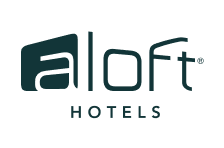Want to simplify business travel and save money? A clear corporate travel policy helps manage costs, streamline processes, and keep employees safe. Here’s how you can create one in 10 simple steps:
- Set Goals and Define Coverage: Decide who can travel, for what reasons, and under which conditions.
- Establish Approval Processes: Define who approves trips, lead times, and emergency procedures.
- Outline Booking Procedures: Use preferred vendors and approved booking channels.
- Set Expense Limits: Clear daily limits for meals, hotels, and transportation (e.g., $75/day for meals).
- Specify Payment Methods: Corporate cards, personal cards (with reimbursement), or direct billing.
- Detail Expense Reporting: Outline receipt requirements and reimbursement timelines.
- Include Safety Protocols: Emergency contacts, insurance, and travel safety guidelines.
- Clarify Personal Travel Rules: Define rules for combining business and personal travel.
- Define Key Terms: Include a glossary for terms like "per diem" and "reimbursable expenses."
- Plan Regular Updates: Schedule annual reviews, track compliance, and adjust as needed.
Quick Tip: Approved hotels like Aloft Trophy Club Westlake offer consistent rates, business-friendly amenities, and prime locations near corporate hubs.
How To Draft A Corporate Travel Policy That Fits Your …
10 Steps to Write Your Travel Policy
Drafting a travel policy requires clear goals and practical steps. Follow these 10 steps to create a policy that balances cost control, employee safety, and smooth operations.
1. Set Goals and Define Coverage
Start by outlining your objectives, such as managing costs, ensuring employee safety, and improving efficiency. Clearly specify who is covered under the policy, including:
- Full-time employees and contractors
- Approved reasons for travel (e.g., client meetings, conferences, training)
- Geographic restrictions
- Guidelines for trip durations
2. Establish Approval Processes
Create an easy-to-follow system for travel approvals. Define:
- Who has authority to approve requests (e.g., direct managers, department heads)
- Required lead times (e.g., 2–3 weeks for international trips, 1 week for domestic)
- Emergency approval procedures
- Necessary documentation
3. Outline Booking Procedures
Provide detailed instructions for booking travel. Include approved channels and preferred vendors. For accommodations, specify options like Aloft Trophy Club Westlake for its convenient location near corporate hubs.
4. Define Expense Categories and Limits
Set clear spending limits in U.S. dollars to avoid confusion:
| Expense Category | Daily Limit |
|---|---|
| Meals | $75 |
| Hotel (major cities) | $250 |
| Hotel (other locations) | $175 |
| Ground Transportation | $50 |
5. Specify Payment Methods
List acceptable ways to pay for travel and how to handle reimbursements:
- Corporate credit cards
- Personal cards (with reimbursement)
- Direct billing options
- Required documentation and submission deadlines
6. Detail Expense Reporting
Explain how employees should submit expense reports, including:
- Receipt requirements
- Accepted receipt formats
- Deadlines for submission
- Review and approval process
- Timeframes for reimbursement
7. Include Safety Protocols
Ensure traveler safety by outlining:
- Emergency contact details
- Health insurance information
- Security guidelines
- COVID-19 measures
- Natural disaster response plans
8. Clarify Personal Travel Guidelines
Provide rules for mixing business and personal travel:
- Allowable extensions to travel dates
- How to split costs between personal and business expenses
- Insurance coverage during personal days
- Rules for family members accompanying travelers
9. Define Key Terms
Add a glossary to clarify important terms, such as:
- Per diem
- Business travel
- Reimbursable expenses
- Travel advance
- Direct billing
10. Plan for Regular Updates
Keep your policy relevant by setting up a review process:
- Schedule annual reviews
- Communicate updates effectively
- Gather employee feedback
- Monitor compliance
- Track metrics to measure success
These steps will help you create a travel policy that supports both your team and your business goals.
Hotel Booking Rules and Options
Why Use Approved Hotels
Opting for approved hotels helps keep costs in check and guarantees a consistent level of quality. These properties come with several perks tailored to business travelers:
Fixed Corporate Rates: Agreements with hotels allow for set rates that fit within expense guidelines. This makes budgeting simpler and keeps spending predictable.
Work-Friendly Amenities: Approved hotels typically provide features that make business trips more productive, such as:
- Fast and reliable wireless internet
- Meeting rooms for team discussions
- Fitness centers for staying active
- On-site dining options for convenience
Prime Locations: Staying near corporate offices cuts down on travel time and expenses. This approach not only saves money but also allows for more productive work hours.
Aloft Trophy Club Westlake Features

Hotels like Aloft Trophy Club Westlake are designed with business travelers in mind. Here’s what this property offers:
| Feature Category | Available Amenities |
|---|---|
| Room Types | Spacious King and Queen rooms, mini-fridges, coffee/tea makers |
| Business Services | Free WiFi, Tactic Meeting Room, modern tech, adaptable event spaces |
| Location Benefits | Close to Charles Schwab HQ, Deloitte, Sabre, and Fidelity; easy access to Highway 114 |
| Convenience | On-site restaurant, W XYZ Lounge, fitness center, outdoor pool |
These amenities aim to make business travel both efficient and comfortable. With flexible meeting spaces and thoughtfully designed rooms, this hotel caters to both individual and group needs.
Incorporating approved hotels like this into your travel policy supports your goals of managing costs and streamlining operations.
sbb-itb-1e56dfa
Managing Travel Expenses
Managing travel expenses is a critical part of any corporate travel policy. Clear guidelines help control costs while ensuring employees travel comfortably.
Expense Types and Limits
Expense guidelines outline what can be spent and where limits apply. Here’s a breakdown of common expense categories:
| Expense Category | Set Limit | Details |
|---|---|---|
| Hotels | Varies by destination | Includes room rate, taxes, and fees. Adjust limits based on location. |
| Meals | Daily per diem | Specify allowances for breakfast, lunch, and dinner. |
| Ground Transport | Budget as needed | Covers rideshare, taxis, or car rentals. |
Establishing these limits ensures consistency and helps prevent overspending.
How to Get Reimbursed
A smooth reimbursement process is essential for keeping travel budgets on track. Here’s what employees need to know:
Documentation Requirements:
- Submit clear, itemized receipts for all expenses.
- Include additional documents, like hotel folios or confirmations, when applicable.
Steps for Digital Submission:
- Scan receipts to ensure all details are legible.
- Complete expense reports, including purposes, project codes, and travel dates.
Review and Reimbursement:
- Submit completed reports for review.
- Keep copies of receipts until reimbursement is confirmed.
For longer stays at approved properties, such as Aloft Trophy Club Westlake, request a detailed folio to separate room charges from other expenses accurately. This ensures proper allocation and avoids confusion during the review process.
Conclusion: Making Travel Policy Work
A well-thought-out travel policy simplifies travel arrangements, keeps expenses in check, and prioritizes employee comfort. Hotels like Aloft Trophy Club Westlake, located near major corporate hubs such as Charles Schwab, Deloitte, Sabre, and Fidelity, offer convenience that boosts productivity while staying aligned with policy requirements.
Tips for Effective Policy Implementation:
- Regularly update expense limits to reflect market trends and employee input
- Clearly outline documentation needed for reimbursements
- Partner with hotels that provide consistent quality and pre-negotiated rates
- Make policy documents and expense tools easy to access
These practices help strike the right balance between managing costs and ensuring employee comfort. Amenities like free coffee/tea, fitness centers, and adaptable meeting spaces contribute to this balance by supporting productivity.
FAQs
How does a corporate travel policy help manage costs and ensure employee safety during business trips?
A well-designed corporate travel policy helps manage costs by setting clear expense limits, establishing booking guidelines, and streamlining approval processes. These measures ensure that travel expenses stay within budget while maintaining efficiency.
Additionally, such a policy enhances employee safety by providing clear protocols for travel arrangements, emergency contacts, and approved accommodations. For example, choosing reliable hotels like Aloft Trophy Club Westlake, which offers modern amenities and proximity to corporate hubs, can contribute to both convenience and peace of mind for business travelers.
What are the advantages of choosing approved hotels like Aloft Trophy Club Westlake for corporate travel?
Staying at approved hotels, such as Aloft Trophy Club Westlake, offers several key benefits for corporate travelers. These hotels are often selected based on their ability to meet company standards for comfort, convenience, and cost-efficiency.
Aloft Trophy Club Westlake, for example, provides modern amenities like free WiFi, fitness facilities, and comfortable guest rooms tailored to both productivity and relaxation. Its proximity to corporate offices and local attractions ensures easy access to business meetings and downtime activities. Additionally, using approved hotels helps streamline expense tracking and ensures compliance with corporate travel policies, saving time and reducing administrative hassle.
How often should we review and update our corporate travel policy to keep it effective and relevant?
To ensure your corporate travel policy remains effective and aligned with your company’s needs, it’s a good idea to review and update it at least once a year. Regular updates help address changes in business priorities, travel trends, and employee feedback.
Additionally, consider revisiting the policy sooner if there are significant changes in company operations, travel costs, or compliance requirements. Keeping the policy current ensures it remains practical, cost-effective, and compliant with industry standards.




